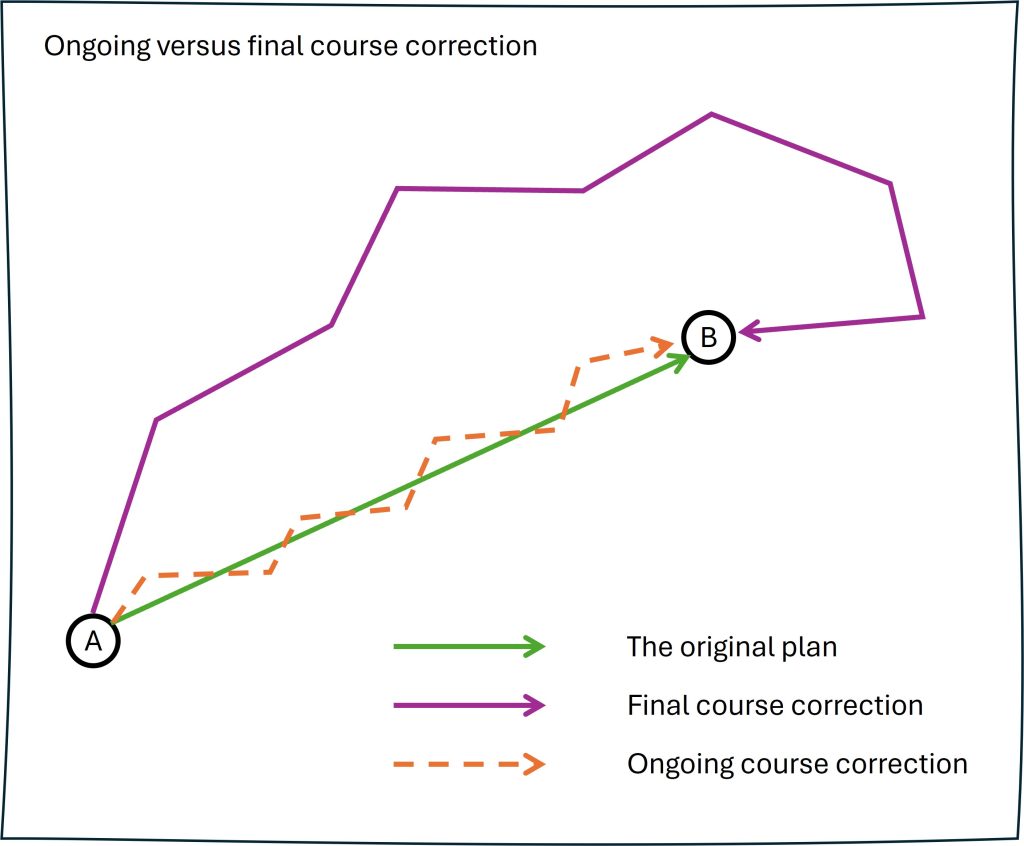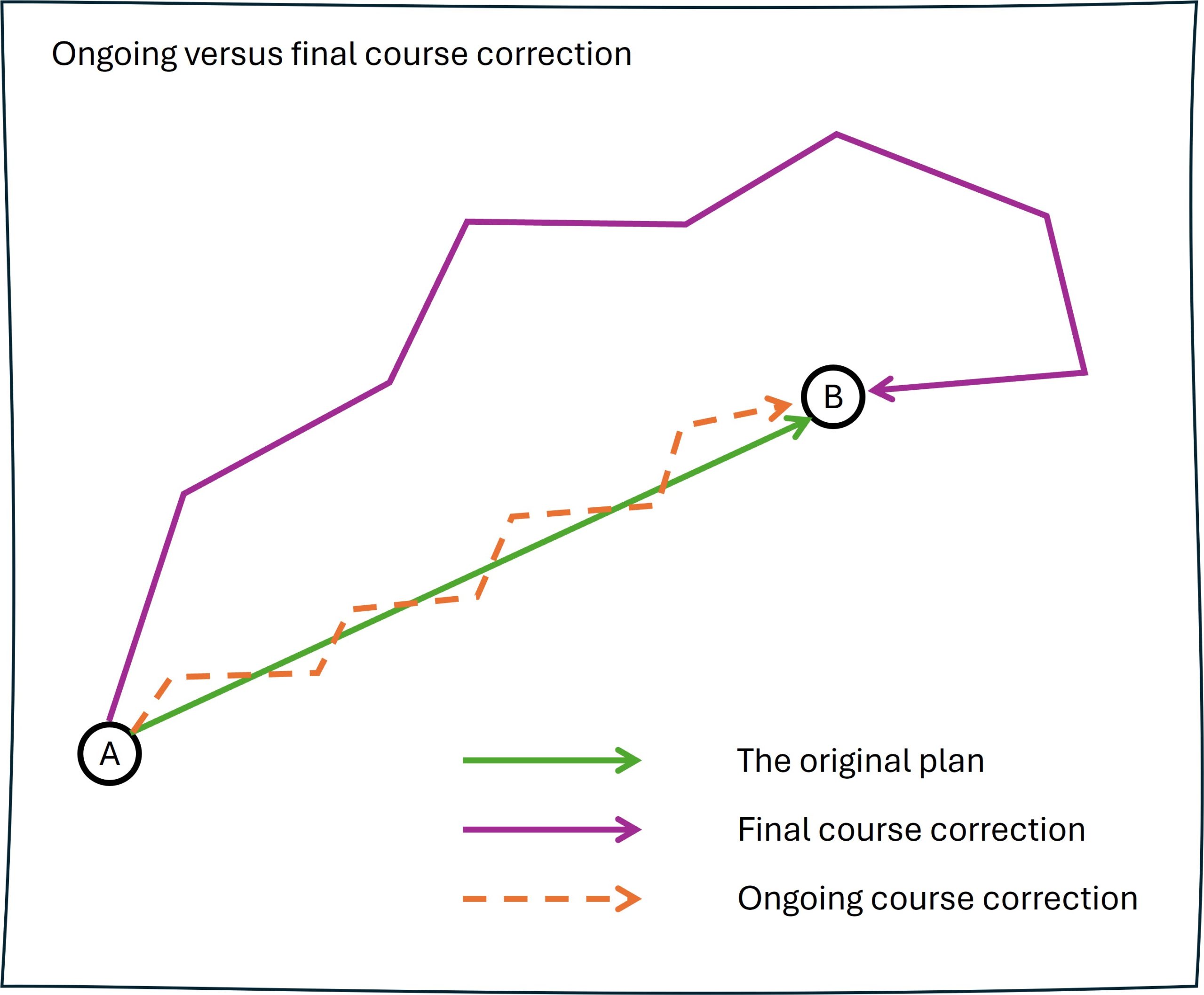One of the most powerful on time delivery strategies is constant course correction.
I’m sure that you’ll know this as being the same approach that keeps an aeroplane on track. The plane is constantly being blown off course and spends 99% of the time adjusting the flight so that it ends up where it needs to be, when it needs to be there.
We have the same challenge with our business, whether we are project based, service orientated or in manufacturing.
And, we can have similar benefits too, improved customer satisfaction, better profit levels, higher team morale. We cannot solely rely on slack within our project plans and production schedules to achieve on time delivery…
The main options

As you can see from this image, a straight line is the best path between the two points (A and B). You also know that this is rarely the case in life and in business.
The two other paths (purple and orange) represent the two main strategies that I see employed. The purple line (‘final course correction’) is, unfortunately, the most common I see. Bury your head in the sand, hope for the best and cross your fingers that you get a lucky break later on. The reality is some kind of overshooting and frantic scrambling to get back on track (usually at an enormous expense).
The orange line (‘ongoing course correction’) isn’t fantasy. It might feel like this, however, when you’re in the middle of a chaotic situation. Here lies our improvement opportunity!
Thinking with a clear mind
Making the decision on how to course correct normally requires a clear mind; to see the wood for the trees. It is hard to have a clear mind when under significant pressure. It is better to think through your course correction strategies before you get into a situation when you need to use them.
When you aren’t facing a project overrun, or a production backlog, this is the time to think this through:
What gears do you have to play with (to increase output)?
What management tasks typically need to be prioritised to avoid further slip?
What activities can you typically adjust / re-arrange on the programme?
What options do you have with resourcing, to get back on track?
What organisation and planning activities can be improved now, to save time later?
I recommend that a list of standard options is created that match how your business operates. I would then put them into a priority sequence, starting with the quickest and lowest cost options first.
The intention isn’t to increase your costs to get back on track. If there is cost involved, however, this needs to be considered in terms of whether it is better to spend a little now to save a lot later.
When you haven’t got a magic wand!
As you can’t wait for a magic wand, we have two further points to consider, to put this strategy into effect:
- Identifying that you are off course.
- Knowing which ‘gear’ to move into.
It might be really obvious that you are off track. If this is the case then you just need to be honest and conscious of the fact. As stated previously, burying your head in the sand doesn’t work.
If it isn’t obvious, then you may need to create some indicators to help you. This could be existing KPIs (Key Performance Indicators) or reportable stages that you can use to gauge progress.
Once you know that you are off track, you need to select the approach that is best for the situation. Two good options here are developing simple to understand criteria (e.g. if you are in this situation, perform this action) or drawing up a flowchart. I recommend that you use an option that instinctively feels right for your organisation. I like flowcharts because they are less subjective and a good way to apply a rules-based approach, but this is personal preference.
The frequency of reviewing the on time delivery status is the final factor I’d like you to consider. Daily might be too frequent, but you’ll know what suits your business best.
Put it into action
Let me summarise the above, with the hope that you find something you can take away and apply to your own business as a formal approach:
- Know your course correction options ahead of time.
- Agree how you will monitor your progress, so that you know that you are off course and when you need to put your course correction planning into effect.
- Determine how you will select the right option without having to think too hard.
Remember, we don’t have to reinvent the wheel every time we experience slippage…
